From dire wolves to woolly mammoths, the idea of resurrecting extinct species has
captured the public imagination. Colossal Biosciences, the Dallas-based biotech company leading the charge, has made headlines for ambitious efforts to bring back long-lost animals using cutting edge genetic engineering.
It recently announced the birth of pups with key traits of dire wolves, an iconic predator last seen roaming North America more than 10,000 years ago. This followed on the heels of earlier project announcements focused on the woolly mammoth and the thylacine. This all fuels a sense that de-extinction is not only possible but imminent.
But as the science advances, a deeper question lingers: how close must the result be to count as a true return? If we can only recover fragments of an extinct creature’s genome – and must build the rest with modern substitutes – is that really de-extinction, or are we simply creating lookalikes?
To the public, de-extinction often evokes images of Jurassic Park-style resurrection: a recreation of a lost animal, reborn into the modern world. In scientific circles, however, the term encompasses a variety of techniques: selective breeding, cloning, and increasingly, synthetic biology through genome editing. Synthetic biology is a field that involves redesigning systems found in nature.
Colossal
Scientists have used selective breeding of modern cattle in attempts to recreate an animal that resembles the auroch, the wild ancestor of today’s breeds. Cloning has been used to briefly bring back the pyrenean ibex, which went extinct in 2000. In 2003, a Spanish team brought a cloned calf to term, but the animal died a few minutes after birth.
This is often cited as the first example of de-extinction. However, the only preserved tissue was from one female animal, meaning it could not have been used to bring back a viable population. Colossal’s work falls into the synthetic biology category.
These approaches differ in method but share a common goal: to restore a species
that has been lost. In most cases, what emerges is not an exact genetic copy of the extinct species, but a proxy: a modern organism engineered to resemble its ancestor in function or appearance.
Take the case of the woolly mammoth. Colossal’s project aims to create a cold-adapted Asian elephant that can fulfil the mammoth’s former ecological role. But mammoths and Asian elephants diverged hundreds of thousands of years ago and differ by an estimated 1.5 million genetic variants. Editing all of these is, for now, impossible. Instead, scientists are targeting a few dozen genes linked to key traits like cold resistance, fat storage and hair growth.
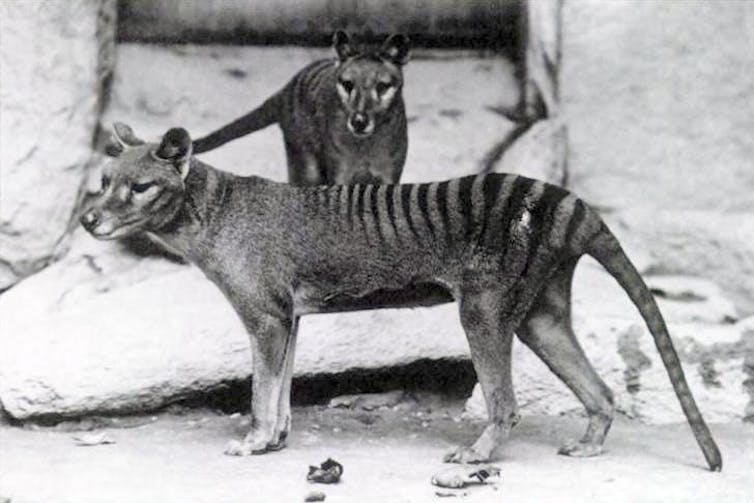
Smithsonian Institution
Compare that to humans and chimpanzees. Despite a genetic similarity of around 98.8%, the behavioural and physical differences between the two are huge. If comparatively small genetic gaps can produce such major differences, what can we expect when editing only a tiny fraction of the differences between two species? It’s a useful rule of thumb when assessing recent claims.
As discussed in a previous article, Colossal’s dire wolf project involved just 20 genetic edits. These were introduced into the genome of a gray wolf to mimic key traits of the extinct dire wolf. The resulting animals may look the part, but with so few changes, they are genetically much closer to modern wolves than their prehistoric namesake.
Colossal’s ambitions extend beyond mammoths and dire wolves. The company is
also working to revive the thylacine (Tasmanian tiger), a carnivorous marsupial that was once native to mainland Australia, Tasmania and New Guinea. The last example died at Hobart Zoo in 1936. Colossal is using a genetic relative called the fat-tailed dunnart – a tiny marsupial – as the foundation. The goal is to engineer the dunnart’s genome to express traits found in thylacines. The team says it is developing an artificial uterus device to carry the engineered foetus.
Colossal also has a project to revive the dodo, a flightless bird that roamed Mauritius until the 1600s. That project will use the Nicobar pigeon, one of the dodo’s closest living relatives, as a basis for genetic reconstruction.
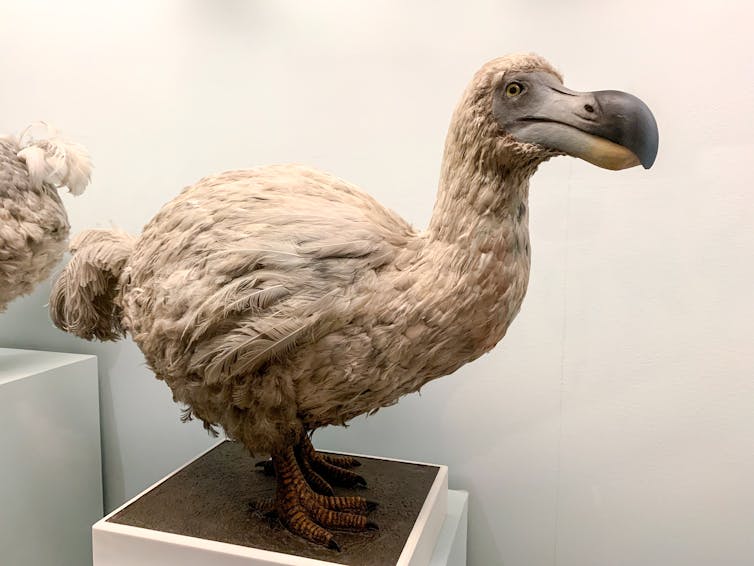
The Art of Pics / Shutterstock
In each case, the company relies on a partial blueprint: incomplete ancient DNA, and then uses the powerful genome editing tool Crispr to edit specific differences into the genome of a closely related living species. The finished animals, if born, may resemble their extinct counterparts in outward appearance and some behaviour – but they will not be genetically identical. Rather, they will be hybrids, mosaics or functional stand-ins.
That doesn’t negate the value of these projects. In fact, it might be time to update our expectations. If the goal is to restore ecological roles, not to perfectly recreate extinct genomes, then these animals may still serve important functions. But it also means we must be precise in our language. These are synthetic creations, not true returns.
Technology to prevent extinction
There are more grounded examples of near-de-extinction work – most notably the
northern white rhinoceros. Only two females remain alive today, and both are
infertile. Scientists are working to create viable embryos using preserved genetic
material and surrogate mothers from closely related rhino species. This effort
involves cloning and assisted reproduction, with the aim of restoring a population
genetically identical to the original.
Unlike the mammoth or the thylacine, the northern white rhino still has living
representatives and preserved cells. That makes it a fundamentally different
case – more conservation biology than synthetic biology. But it shows the potential of this technology when deployed toward preservation, not reconstruction.
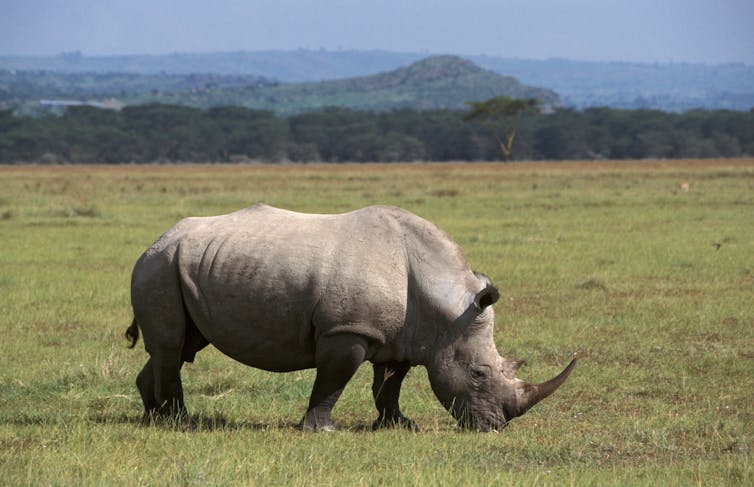
Agami Photo Agency / Shutterstock
Gene editing also holds promise for helping endangered species by using it to introduce genetic diversity into a population, eliminate harmful mutations from species or enhance resilience to disease or climate change. In this sense, the tools of de-extinction may ultimately serve to prevent extinctions, rather than reverse them.
So where does that leave us? Perhaps we need new terms: synthetic proxies, ecological analogues or engineered restorations. These phrases might lack the drama of “de-extinction” but they are closer to the scientific reality.
After all, these animals are not coming back from the dead – they are being invented, piece by piece, from what the past left behind. In the end, it may not matter whether we call them mammoths or woolly elephants, dire wolves or designer dogs. What matters is how we use this power – whether to heal broken ecosystems, to preserve the genetic legacy of vanishing species or simply to prove that we can.
But we should at least be honest: what we’re witnessing isn’t resurrection. It’s reimagination.
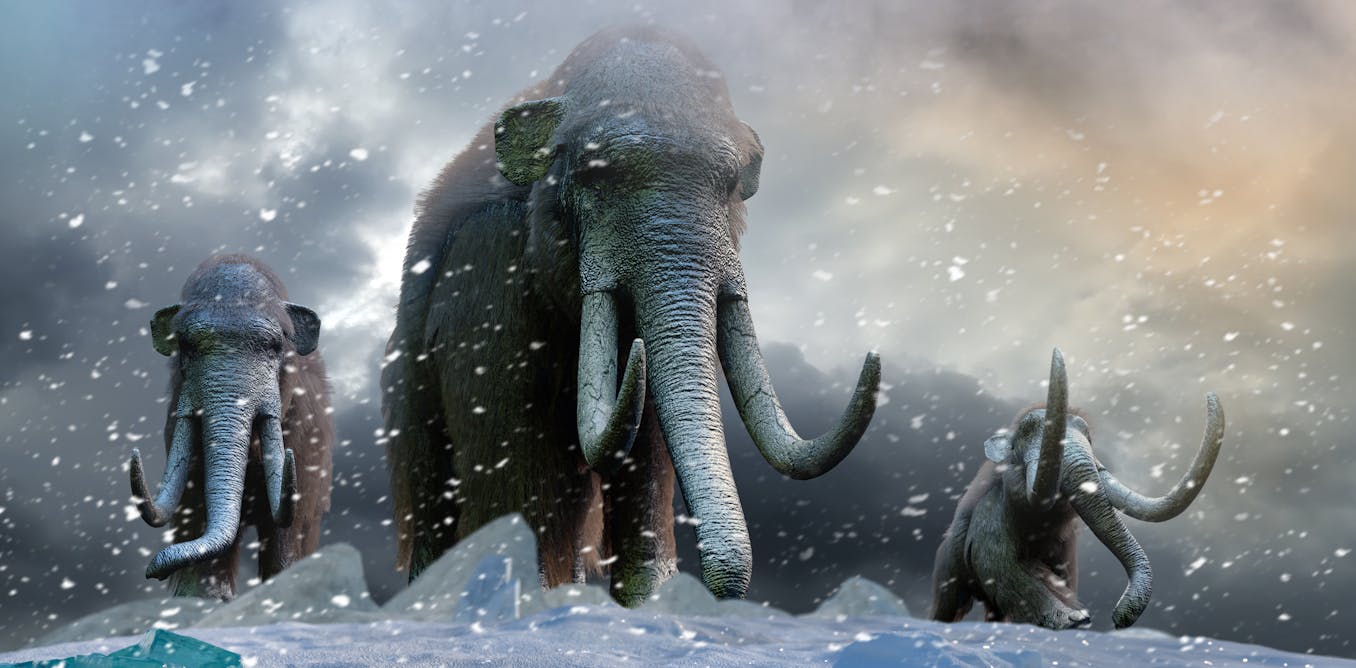
The post “Can we really resurrect extinct animals, or are we just creating hi-tech lookalikes?” by Timothy Hearn, Senior Lecturer in Bioinformatics, Anglia Ruskin University was published on 04/10/2025 by theconversation.com








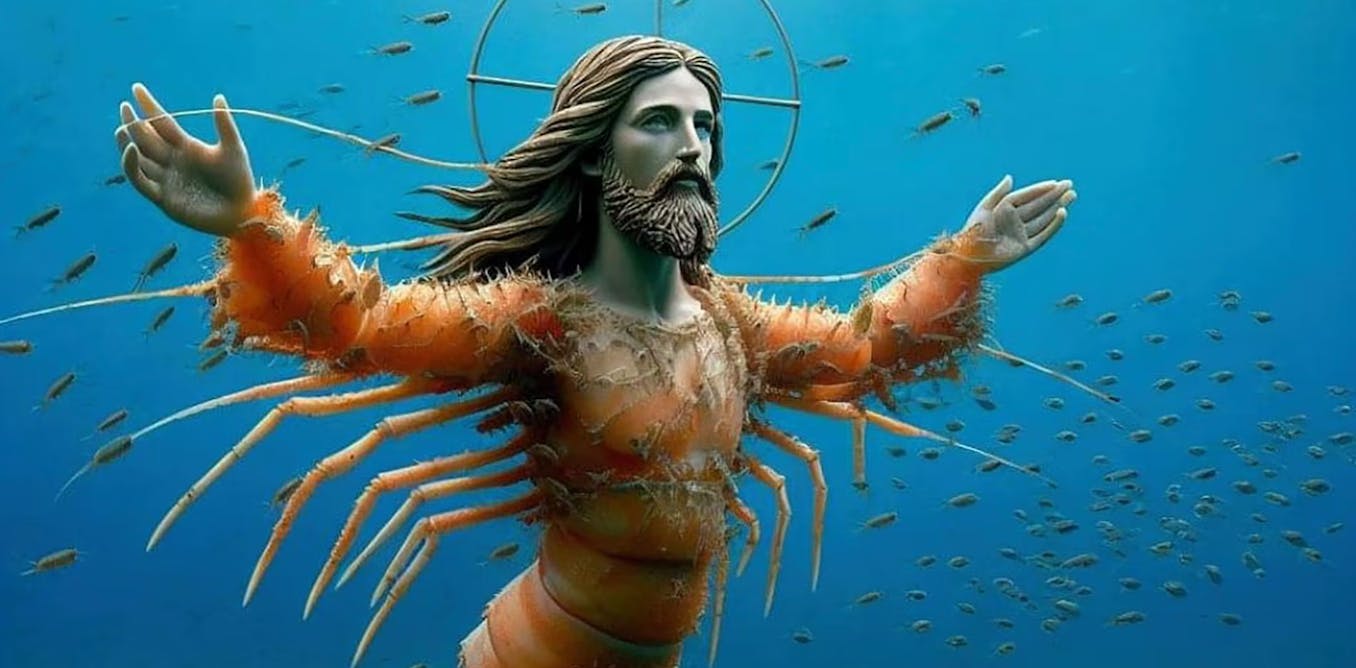


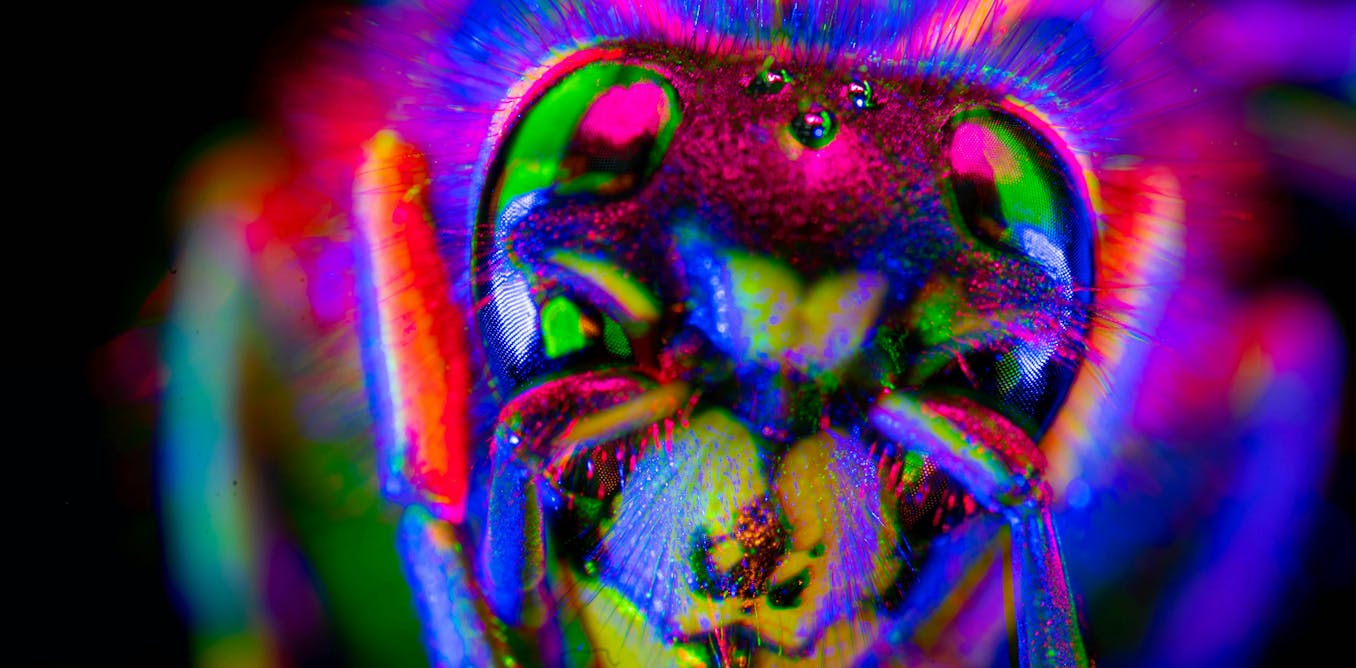



-1.jpg)










